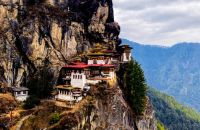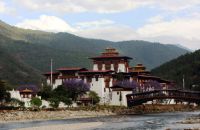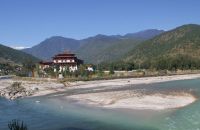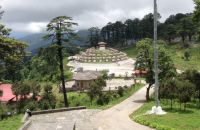Talk with our local travel specialist who can help organize your trip.
20 Tips for Planning Your Trip to Bhutan
Hidden deep within the high Himalayan mountains, Bhutan is a natural paradise. It is one of the few carbon-neutral countries in the world and a staunch champion of sustainable development and environmental protection. With more than half of its land surface covered by forests, Bhutan has one of the cleanest and purest air on the planet. This Himalayan nation is also well-known for its rich culture stemming from the ancient Vajrayana Buddhist and Bon traditions.
A small country in South Asia, Bhutan is one of the least explored destinations in the world. The kingdom had remained isolated for hundreds of years until the 1970s when it finally opened its doors to tourists. It can be regarded as a premium destination as Bhutan only receives a limited number of tourists annually due to a tourism policy that focuses on high value and low impact.
If Bhutan is on your bucket list, here are some tips that could prove helpful for you while planning your trip to the Land of the Thunder Dragon.
Table of Content
- Obtain a Visa
- Choose A Licensed Tour Operator To Book Your Tour
- Plan Your Trip Well In Advance
- Be Aware Of The Daily Tariff
- Pack Appropriate Clothing
- Respect Local Customs And Culture
- Acclimatize To The Altitude
- Stay Hydrated And Be Mindful Of Altitude Sickness
- Be Mindful Of The Environment
- Be Prepared For Limited Internet Connectivity
- Enjoy Bhutanese Cuisine And Hospitality
- Familiarize Yourself With Bhutan's Festivals
- Learn Basic Dzongkha Phrases
- Budget For Souvenirs And Tipping
- Keep Cash Handy
- Be Mindful Of Photography Restrictions
- Check Health Precautions
- Understand Bhutan's Monarchy And Political System
- Stay Flexible And Embrace Serendipity
- Leave No Trace And Respect Wildlife
1. Obtain a Visa
To obtain a tourist visa for Bhutan, you will either have to get it online or ask your tour operator to arrange it for you. For e-visa, you will have to log into the Department of Immigration’s website and fill out the visa application form. A digital copy of your passport, a passport-sized photograph, and a visa fee of USD 40 are required to process your visa. You will also have to pay the Sustainable Development Fee while applying for your visa. The government imposes a per-night fee called SDF or Sustainable Development Fee on tourists traveling to Bhutan. A tourist has to pay an SDF of USD 100 per night.
Your passport should have at least one blank page and should be valid for six months at the time of exiting from Bhutan. It will take around a week or two to get your Bhutan visa.
For Indian tourists, the rules are a bit different. Indians do not need a visa to enter Bhutan but they need a permit similar to visa. The SDF amount for Indians is Tourists from Bangladesh and the Maldives can avail visas on arrival.
2. Choose a licensed tour operator to book your tour
In order to enjoy a hassle-free vacation, it’s recommended that you book your trip with a licensed tour operator. While the government of Bhutan has relaxed its rules for tourists and have lifted the prohibition on independent travel, this new rule is only operational in Paro and Thimphu. Moreover, you will still need a local guide to enter some monasteries and museums in these cities. It will also cost you more to book a taxi to move around on your own.
Therefore, it will be easier for you to book your Bhutan tour with a licensed operator. They will arrange everything for you, from visas to airport pick-up and drop-off, meals, hotel accommodations, etc. You won’t have to stress over any aspect of your tour.
3. Plan your trip well in advance
Spontaneous travel is not possible in Bhutan. You need to plan carefully and well in advance. First off, Bhutan has only two airlines (Druk Air and Bhutan Airlines) operating international flights, and the limited seats on these airlines get sold out quickly like hot cakes during peak season. If you do not plan your trip in advance, chances are you will have to face multiple hurdles to enter the country. While there’s an option to enter the country via its land borders, entering Bhutan overland can be a tedious, costly, and time-consuming process. You will have to fly into India and reach the land border that it shares with Bhutan. These borders are located in far-flung areas with no air connectivity.
For example, to make your entry via the Jaigaon-Phuentsholing border, you will have to reach India and board a flight from any of the Indian cities to Bagdogra, the nearest airport to the border. From there you can book a taxi to take you to Phuentsholing. You can also travel by train to Hashimara and later book a taxi to Jaigaon. If you are not touring India, the whole process of entering via the land border can be a stressful, expensive, and energy-draining process.
You will also have to take into consideration the weather conditions when you travel. From June to August, Bhutan receives the seasonal monsoon rains, and it gets extremely cold in winter. While it’s possible to get discounts during off-season, you will have to face rough weather during your trip if you plan your travel during an off season.
Many tourists in Bhutan choose to trek and hike. The country is famous for its beautiful hiking and trekking trails. If you plan to embark on a high-altitude trek, do choose the trail carefully, taking your experience and fitness level into consideration. Most high-altitude treks in Bhutan are grueling and tough and not recommended for inexperienced trekkers.
Scheduling your vacation during one of Bhutan’s annual festivals will also offer you an enriching experience. Most festivals in Bhutan involve religious rituals, dances, and performances by monks as well as the common people. The performances are held in the spacious courtyards of monasteries or open grounds, attended by the public dressed in their best traditional attire.
4. Be aware of the daily tariff
Bhutan is a country that tries to prevent overtourism by charging a daily fee to tourists. Known as SDF, or the Sustainable Development Fee, tourists have to pay USD 100 (per person) daily while traveling in Bhutan. There’s a fifty percent concession for children of ages 5 to 12, while kids below the age of 5 are exempt from paying this fee.
As India and Bhutan share a good relationship, the SDF for Indians is much lower. Indian tourists are charged an SDF of only INR 1200 per night.
The Sustainable Development Fee goes to fund some major developmental projects in the country. The amount collected from SDF is used to fund the country’s free education and healthcare schemes. The fund is also used for various sustainable tourism and environment-related projects. A part of the fund goes towards training and upskilling youths.
While paying a daily fee of USD 100 may seem costly, one can take comfort in the knowledge that this amount goes to improve the lives of the Bhutanese people. Tourists also benefit from it, as the amount is used to improve the tourism infrastructure and facilities.
5. Pack appropriate clothing
It is important to pack appropriate gear and clothes while traveling in Bhutan. One thing you should not miss packing is rain gear. Bhutan also referred to as the ‘Land of the Thunder Dragon’, is among the wettest countries in South Asia. Rainfall is expected at all times of the year, regardless of the season. One can expect heavy and torrential downpour during monsoon season and light drizzle or sudden thunderstorms at other times of the year.
Pack full-sleeved shirts or tops and leg-covering dresses and pants. Monasteries and shrines in Bhutan follow a strict dress code, and those wearing tight or revealing dresses are not granted permission to enter. One needs to dress modestly to visit these sacred Buddhist spaces.
You can pack clothes as per the season. It gets really cold in the evenings in Paro and Thimphu, so make sure to carry warm clothes regardless of the season you are traveling in Bhutan. If you are planning on participating in an outdoor activity like trekking or mountain biking, you will receive a proper packing list from your operator, which you can use as a reference to do your packing.
6. Respect local customs and culture
In a modern world where people are slowly letting go of their old beliefs, customs, and traditions, Bhutan is an exception. This small country has been steadfast in preserving its age-old customs and traditions. Once you are in Bhutan, you will discover the unique and fascinating Bhutanese culture wherever you go.
Life in Bhutan feels suspended in time. This is a country where television and the internet were officially introduced only in 1999. Remining cut off from the rest of the world for centuries has led Bhutanese to preserve their old way of life. There’s an old-world charm and a slow, unhurried vibe in Bhutan which is very refreshing.
The Bhutanese people are deeply religious and devout Buddhists. They are hospitable and polite towards outsiders. But they are quick to take offense if tourists don’t respect their laws and customs. The rules are quite strict in Bhutan, and sometimes foreigners are jailed for improper or inappropriate conduct.
Some of the dos and don’ts while traveling in Bhutan are:
- Dress modestly and take off your shoes while entering sacred spaces like temples and monasteries. Wearing clothes that are tight and revealing at monasteries is deemed disrespectful.
- Do not talk loudly, laugh, or scream inside monasteries.
- Do not smoke in public. There are designated areas where smokers are allowed to smoke.
- Do not step or climb on religious structures like chortens or stupas.
- Do not film or take pictures where filming or photography is prohibited.
- Do ask people for permission before clicking their pictures.
- Do not point at religious structures with your finger. Always gesture with your chin or your palm facing outwards to point at religious idols or structures.
- While walking around religious monuments or buildings, walk clockwise. Always spin the prayer wheels clockwise with your right hand.
- Do not criticize or mock Bhutan’s royal family and their religious heads or saints openly. The locals won’t take kindly to it.
- Do not sit with your legs stretched out, with your feet pointed at a person or monument.
- When locals offer you something, receive it with both hands, thanking them politely. Not accepting an item that’s given to you with respect is considered rude.
7. Acclimatize to the Altitude
Leaving the south of Bhutan, most places in Bhutan lie above 2000 meters. While traveling through cities, you will need to drive across mountain passes above 3000 meters. While planning to hike or trek, make sure that you have acclimatized properly before hitting the trail. As you ascend higher the air pressure and oxygen content decrease. The lack of oxygen at high altitude leads to breathing difficulties. Spending a day or two at places a bit lower than high altitude (2500 meters and above) will allow your body to adapt and acclimatize to thin air.
Featured Trips
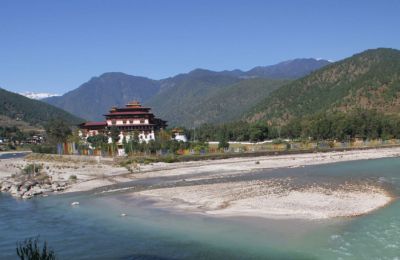
Bhutan Cultural Tour - 5 days
Bhutan Cultural Tour of 5 days lets you discover the rich Bhutanese culture. Visit ancient fortresses and Taktsang Monastery. Enjoy traditional hot stone bath.
Inquire Now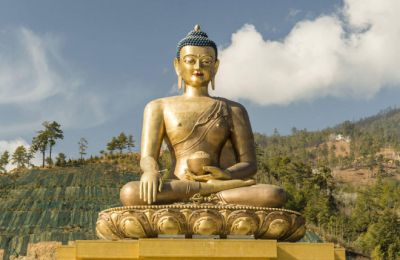
Bhutan Heritage Tour - 8 days
Bhutan Heritage Tour lets you explore centuries-old dzongs and Lakhangs built by Bhutanese kings and spiritual leaders. Take this Bhutan Heritage Tour and journey across the cultural hotspots of Bhutan, a fascinating Himalayan kingdom.
Inquire NowWhere to travel next?
Get help from our travel specialists for holiday ideas that matches your interests.
8. Stay hydrated and be mindful of altitude sickness.
Altitude sickness is a real issue while trekking or hiking in Bhutan. Most trekking and hiking destinations in Bhutan lie well above 2500 meters, and this puts one at risk of AMS, or acute mountain sickness. So, if you are hiking or trekking, make sure to drink lots of water and keep yourself hydrated at all times. One of the main reasons people get AMS is dehydration. Keep yourself warm and dry and have emergency medicines ready to combat altitude sickness. If you are on a multiday high-altitude trek, make sure to acclimatize properly before walking to higher elevations. Also, do ensure that you have travel insurance to cover the cost of air evacuation and medical treatment in case of emergencies.
9. Be mindful of the environment
People in Bhutan coexist peacefully with their natural environment. By law and religion, killing or harming animals, felling trees, and destruction of forests is strictly prohibited. While in Bhutan, be mindful of the local laws and take care not to disturb or destroy anything in nature. Do not litter or throw your trash on the ground. While trekking or hiking, carry whatever trash you have and dispose of it at designated trash collection spots.
10. Be Prepared for limited internet connectivity
There are 3G and 4G mobile connections available on Bhutanese SIMs. While most hotels and cafes in the main cities offer free Wi-Fi to customers, internet speed can be slow to average. You can purchase a local SIM card and buy internet data. However, internet connections can be erratic or absent in rural towns or places far away from the cities. While trekking, you will have to do without a mobile or internet connection, as most of the time you will be in the wilderness, far from any mobile towers.
11. Enjoy Bhutanese cuisine and hospitality
While in Bhutan, enjoy a homestay with a local family. Spending a night at a local home will give you an insight into Bhutanese life and culture. Be open to try the spicy Bhutanese cuisine. Bhutanese food is very different from the food of its neighbors, India and China. The Bhutanese tend to add a lot of chilies and yak cheese in their traditional dishes. Red rice, locally grown green and red peppers, mushrooms, a mix of organic vegetables, and various kinds of dried or raw meat (pork, beef, lamb, and chicken) are used in Bhutanese cuisine. Their food is hearty, filling, and just right for the cold environment. Ema Daatshi (the national dish of Bhutan), Hoentay (buckwheat dumplings), Jaju, Goen Hogay, Suja, Puta, Shamu Datshi, Shakam Paa, and Kewa Datshi are some of the traditional dishes you should absolutely taste while in Bhutan.
12. Familiarize yourself with Bhutan's festivals
Bhutan celebrates a lot of festivals. There’s at least one celebration each month as per the lunar calendar followed by the Bhutanese. The celebrations are a visual feast, full of color and vibrancy.. Most of the festivals in Bhutan are observed to pay homage to the Buddhist saints and deities. These religious festivals are held in monasteries and run for several days.
Tshechhu is a special monastic festival celebrated by each district. Every dzongkhag or district in Bhutan has its own special Tshechhu. While the Paro Tshechhu is held during March, the Thimphu Tshechhu is celebrated in September. During the festival, locals gather in the monastery’s courtyard and enjoy the masked dances and skits performed by the monks. The celebration ends with a fire ritual by the head lama or with the unfurling of a gigantic thangkha.
Punakha Drubchen, Jambay Lakhang Drup, Ura Yokchoe, Wangdue Tshechhu, etc. are some of the colorful festivals that you should experience in Bhutan.
Besides the religious festivals, there are festivals that have been introduced mainly for tourists. The Black-Necked Crane Festival in Gangteyl, Haa Summer Festival in Haa Valley, Royal Highland Festival in Laya, Jomolhari Mountain Festival in Jangotahng or Jomolhari Base Camp, and Matsutake Festival in Genekha and Ura Valley are held especially for tourists. These festivals showcase Bhutan’s rich culture, traditions, and lifestyle of the nomadic tribes.
13. Learn basic Dzongkha Phrases
Learning the local language will serve as an icebreaker. Bhutanese are generally shy and polite. Speaking a few phrases in their local language, i.e., Dzonkha, can help you connect with the locals. Here are some common Dzongkha phrases that can come in handy while interacting with locals:
- Kuzuzangpola: Hello
- Tashi Delek: Good Luck
- Kadrinchey: Thank you.
- Na gi tshen gachi mo? What is your name?
- Nge gi ming. My name is...
- Inn- Yes
- Men: No.
- Zhey: Eat or drink
- Zhimbay: It is delicious.
- Gaday bay zhui? How are you?
- Legshom: I am fine.
- Gadam chi mo? - How much?
14. Budget for souvenirs and tipping
You will find a plethora of beautiful handmade souvenir items in Bhutan. From intricately woven cane baskets and textiles to beautiful masks, statues, and jewelry items, you will find a lot of souvenir items that you would want to take home with you. The Bhutanese are very good artists and craftsmen, and their work is really fine and detailed. Items like Thangka or scroll painting, traditional silver jewelry, and carved wooden decorative pieces are collector’s items and worth buying. In order to shop for souvenirs, set aside some amount from your total budget.
At the end of your journey do not forget to tip your driver and guide. If you are trekking, make sure to tip the local crew (cooks, kitchen helpers, and horsemen) as well. While there’s no culture of tipping in Bhutan as such, you can show your appreciation to the service providers by tipping them when you feel they deserve it.
Featured Trips
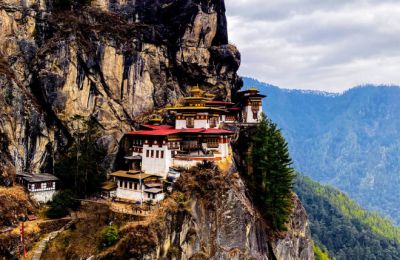
Glimpse of Bhutan Tour - 4 days
Perfect opportunity to taste the charm of the glorious nation and culture of Bhutan. 4 Days the Glimpse of Bhutan Tour is absolutely the right one for those who are short of time but do not want to miss the stunning realm of the Last Himalayan Kingdom, Bhutan
Inquire Now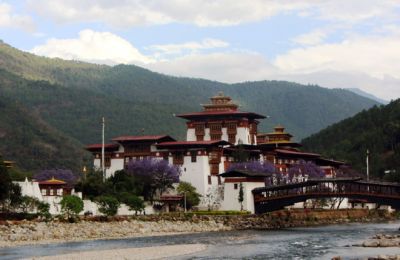
Western Bhutan Tour - 7 days
Western Bhutan Tour 7 days will take you to the major places of western Bhutan and you will be exploring the iconic places. Visit ancient fortresses of bhutan, Dzongs, which are Bhutan's Pride
Inquire NowWhere to travel next?
Get help from our travel specialists for holiday ideas that matches your interests.
15. Keep cash handy
While card payment is accepted in upscale hotels, restaurants, and shops in the cities, small business establishments demand cash payment in local currency. In rural areas too, card payment does not work. Therefore, always keep cash in local currency handy whenever you travel in Bhutan. You can withdraw local currency from ATM kiosks or exchange your money at any of the money exchange centers in the cities. The local currency is Ngultrum. USD and Indian rupee are also widely accepted in hotels and shops in the cities.
The Indian rupee is generally accepted as it has the same value as Ngultrum. However, Indian currency notes of 500 and above are not accepted in Bhutan.
16. Be Mindful of photography restrictions
Photography and filming are prohibited at most monasteries and religious sites. Be mindful and respect the rules. Ignoring the rules might land you in a difficult position, as Bhutanese laws are really strict. If you disobey the rules, you may be fined and turned away from the site. Also try to get permission before taking photographs of people and filming inside shops or restaurants. Respect the privacy of the locals and do not rush to film or photograph everything that you find interesting.
17. Check health precautions
Bhutan is covered with mountains, and most of the tourist attractions in Bhutan lie above 2000 meters. Before planning your trip to Bhutan, it’s advisable to consult your doctor and find out whether you are fit for travel. The mountainous terrain in Bhutan might be demanding for people suffering from respiratory disorders, weak legs, and heart issues.
You need to do a fair bit of walking while touring tourist attractions in Bhutan. Sometimes short hiking is required to reach some shrines and monasteries. Before finalizing your itinerary, do your own research and find out whether you will be able to walk to the places included in your itinerary. For example, Tiger’s Nest, Khamsum Yulley Chorten, and Chimi Lakhang are popular sites that are included in almost every Bhutan itinerary. But tourists should know that these places are not accessible by road, and it involves a long hike to reach these sites.
Bhutan is also a trekker’s paradise, and many tourists come here to enjoy a Himalayan trek. Before opting to trek, one should have some knowledge about the terrain and the challenges that one will face while on the trail. AMS, or altitude sickness, will always be an issue while trekking, and one should know how to prevent it and deal with it. The trekking trails in Bhutan are isolated and lie deep in the wilderness. So keep the details of your travel insurance with you in case you need rescue and evacuation services.
There are no strict vaccination requirements to enter Bhutan; however, to be on the safe side, get vaccination shots for these diseases before you embark on your journey:
Hepatitis A and B, Typhoid, Influenza, Cholera, Measles, Mumps, Japanese Encephalitis, Rabies, Tetanus and Tuberculosis, and Diphtheria.
If you are traveling across South Bhutan and the Royal Manas National Park, you should be careful of malaria. Take precautionary measures and protect yourself from mosquito bites.
Additionally, when in Bhutan, always be sure to consume mineral or filtered water. Drinking tap water and water from natural sources could make you sick.
18. Understand Bhutan’s Monarchy and political system
Bhutan has adopted a constitutional monarchy since 2008. Prior to that, Bhutan was under absolute monarchy. The head of the nation is the King of Bhutan, but the executive powers rest with the Prime Minister and the council of ministers. The king’s title is hereditary, but he has to abdicate by the time he is sixty-five years. The Je Khenpo, or the Chief Abbot, also wields immense power. Bhutan, being a Buddhist country, holds the monks and lamas in high esteem. They are regarded as spiritual gurus or teachers, and people follow their directions.
While in Bhutan, never make the mistake of criticizing the King or the royal family in front of the Bhutanese. The Bhutanese are fiercely loyal to their king and won’t take kindly to criticisms. Also be mindful not to mock or disrespect monks, Buddhist deities, or religious symbols.
19. Stay flexible and embrace serendipity
Try to keep your itinerary flexible to enjoy your experience in Bhutan. Especially when you are traveling with your family (involving small kids), it’s important to keep your options flexible. Prepare yourself for emergencies like delays due to bad weather, closed trails (while trekking), and illnesses.
Life in Bhutan moves at a relaxed pace. Surrender yourself to the slow and relaxed vibe instead of rushing to complete your tour. Surrounded by humongous greenery, it is easy to feel at one with nature in Bhutan. Try a digital detox and stay away from your electronic gadgets and social media to restore your inner balance. Bhutan offers a spiritually immersive and life-changing experience if you are up for it.
20. Leave No Trace and respect wildlife
Practice outdoor etiquette and leave the place you visit as pristine as it was before. Do not disturb things and touch cultural artifacts like wall mosaics and mani stones. Try to minimize the use of plastics and collect whatever trash you have and dump it at the designated dumping site. While trekking, take care not to pluck flowers and vegetation.
While visiting wildlife parks and nature reserves, try to stay quiet and make the least noise. Loud noises and movements make the animals feel threatened. So be on your guard always, and do not disturb the animals when you see them. Also, feeding wild animals is regarded as an offense, as this will do them more harm than good. Do not try to catch butterflies or birds, and keep a safe distance while observing them. Follow the park rules and maintain a certain distance from the animals if they are roaming freely.
Conclusion
Bhutan offers an unforgettable travel experience to tourists. A country where gross national happiness is given more priority than gross material wealth, Bhutan is a destination where you can learn valuable life lessons. From Buddhist spirituality to attaining happiness through a simple and sustainable lifestyle, Bhutan will teach you a lot about existing harmoniously on this planet. While the daily fee makes holidaying in Bhutan costly, the overall services and experiences are top-notch and of high quality. If you are planning a trip to Bhutan and are seeking some information about the country, I hope this article has provided the answers you have been looking for.
Bhutan is a unique destination that you should visit at least once in your life. To enjoy your time in Bhutan, my only advice is to plan your trip carefully, book your tickets in advance, follow the rules, and be culturally sensitive. Tashi delek, and wish you a safe and successful trip!
- Written by: Naba Raj Amgai
Updated: Oct, 1, 2024

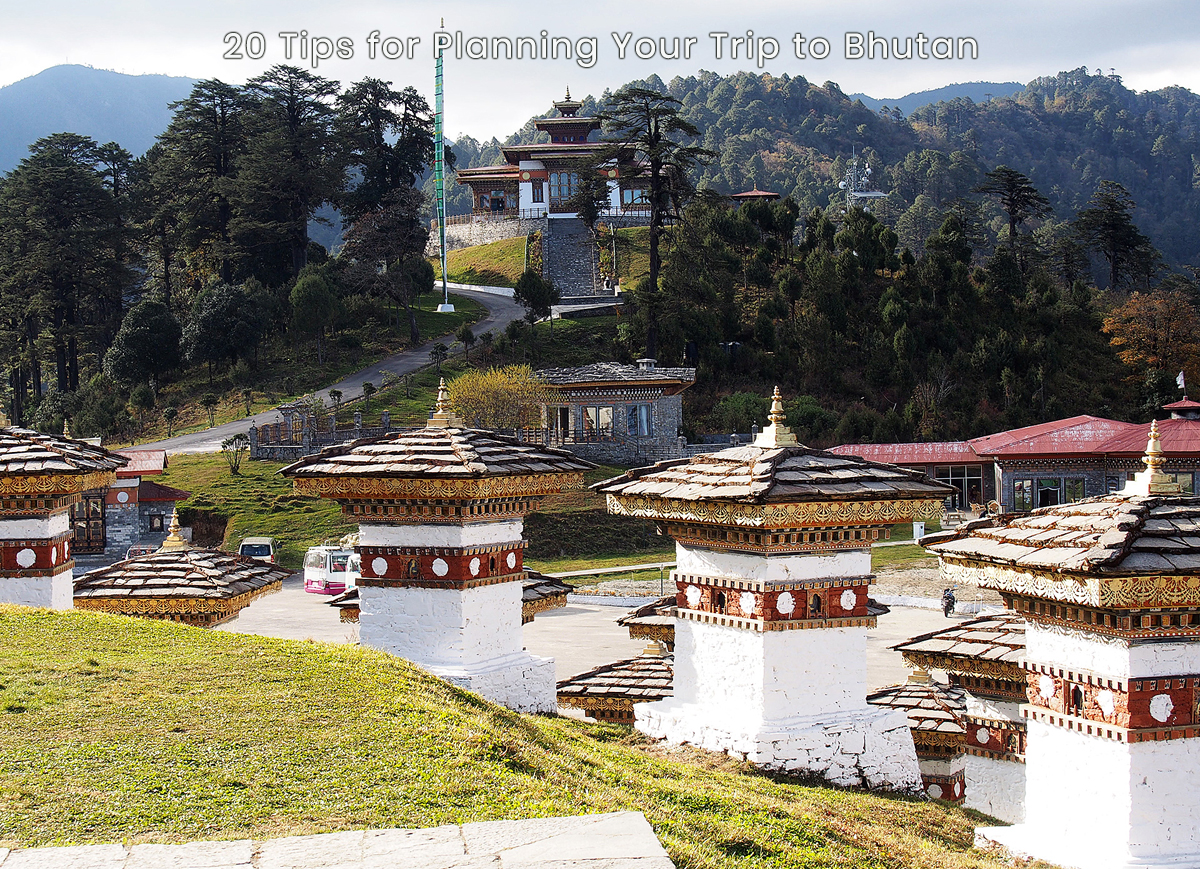



.jpg)

